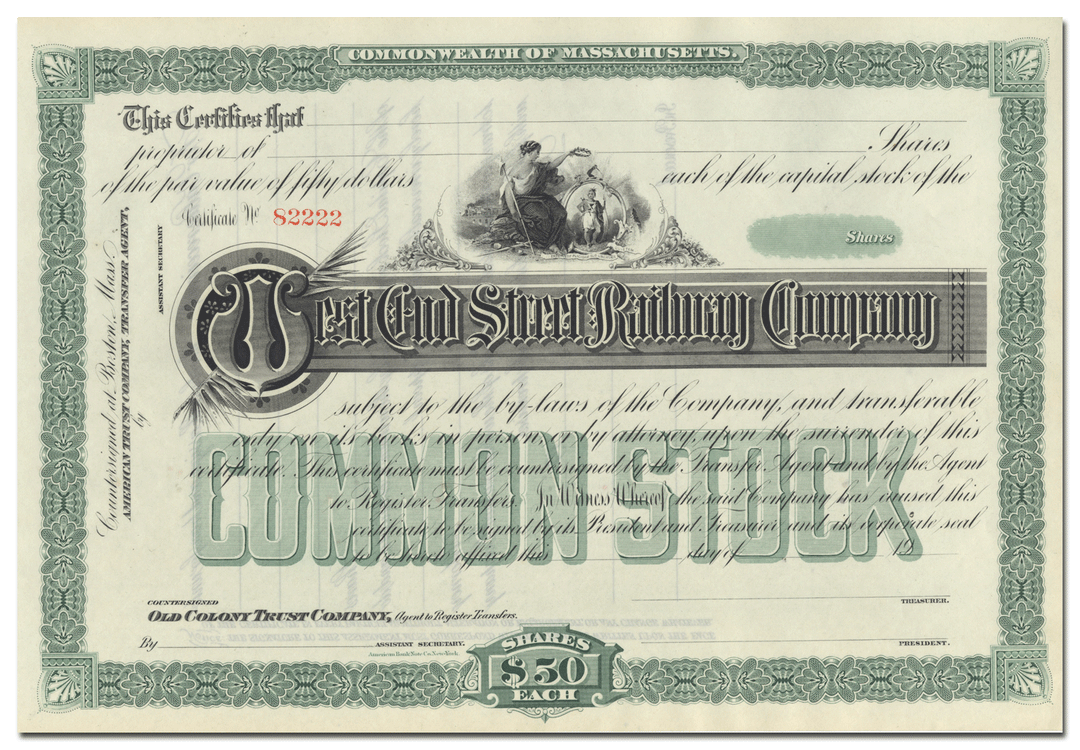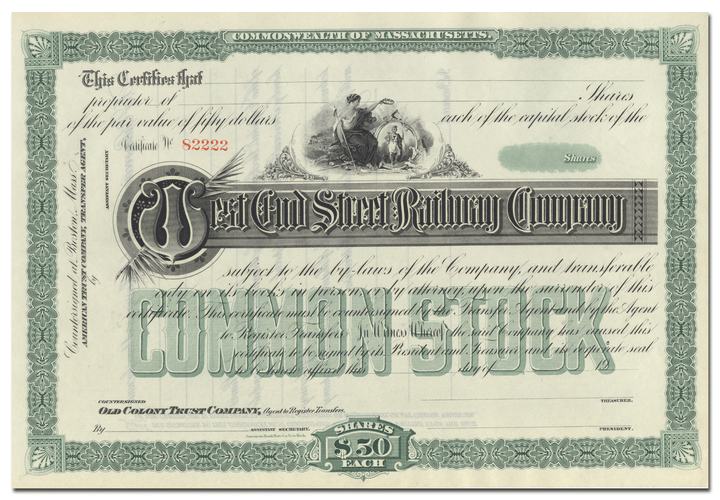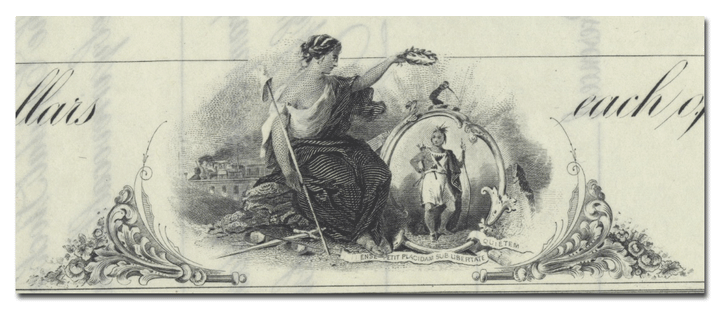West End Street Railway Company
- Guaranteed authentic document
- Orders over $75 ship FREE to U. S. addresses
Product Details
CompanyWest End Street Railway Company
Certificate Type
Capital Stock
Date Issued
Unissued, circa early 1900's
Canceled
No
Printer
American Bank Note Company
Signatures
NA
Approximate Size
11" (w) by 7 1/2" (h)
Images
Show the exact certificate you will receive
Guaranteed Authentic
Yes
Additional Details
NA
Reference
Historical Context
The West End Street Railway Company was organized November 12, 1887, with Henry M. Whitney as president at the time. This railway was intended as a short electric railway line to real estate located in Brookline, a Boston suburb. Sometime after the franchise was granted, before any construction had started, a number of horse drawn streetcar companies were consolidated (including the Metropolitan Rail Road Company and the Boston Consolidated Street Railway Company) in to one large enterprise, called the West End Street Railway (the start of what has today become Boston’s “T” System).
By the time consolidation was completed in 1888, the West End had 7,816 horses and 1,480 cars. The new transportation business was great and continued to grow. One year later there were as many as 9,000 horses dragging over 2,000 cars all over Boston and adjoining towns. Without a better form of motive power, Whitney had a big white elephant on his hand. After detailed investigations were made, the company reached a decision to install the (San Francisco) mechanical cable system. A local newspaper reported that the company was moving ahead with engineering plans, that cable engineers had arrived in Boston, that cable layout and designs had begun.
Fortunately for everyone, except for mechanical cable engineers, Henry Whitney was invited by Frank Sprague to go to Richmond Virginia to see the merits of his electric road operating in that city. History says that Whitney was very impressed with electric streetcars and that he quickly abandoned the cable. He decided to experiment with the Sprague system and in the summer of 1888, signed a contract for 20 Sprague electric cars to run from Park Square to Chestnut Hill and Allston, using the overhead trolley wire. A short section of line was equipped with the Bentley-Knight underground conduit.
Unfortunately, this underground conduit was poorly constructed and had to be abandoned because of annoying failures and public safety concerns. The death blow for the underground conduit in Boston came on April 9, 1889, when a team of horses was electrocuted while traveling over the conduit track on Boylston Street.
The West End later became the Boston Elevated Railway Company.
Related Collections
Additional Information
Certificates carry no value on any of today's financial indexes and no transfer of ownership is implied. All items offered are collectible in nature only. So, you can frame them, but you can't cash them in!
All of our pieces are original - we do not sell reproductions. If you ever find out that one of our pieces is not authentic, you may return it for a full refund of the purchase price and any associated shipping charges.









